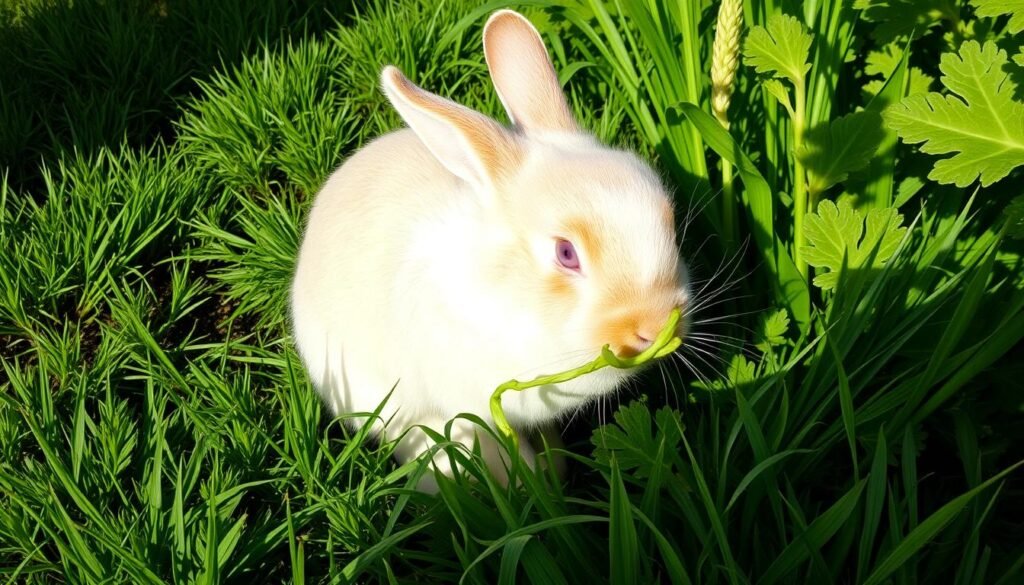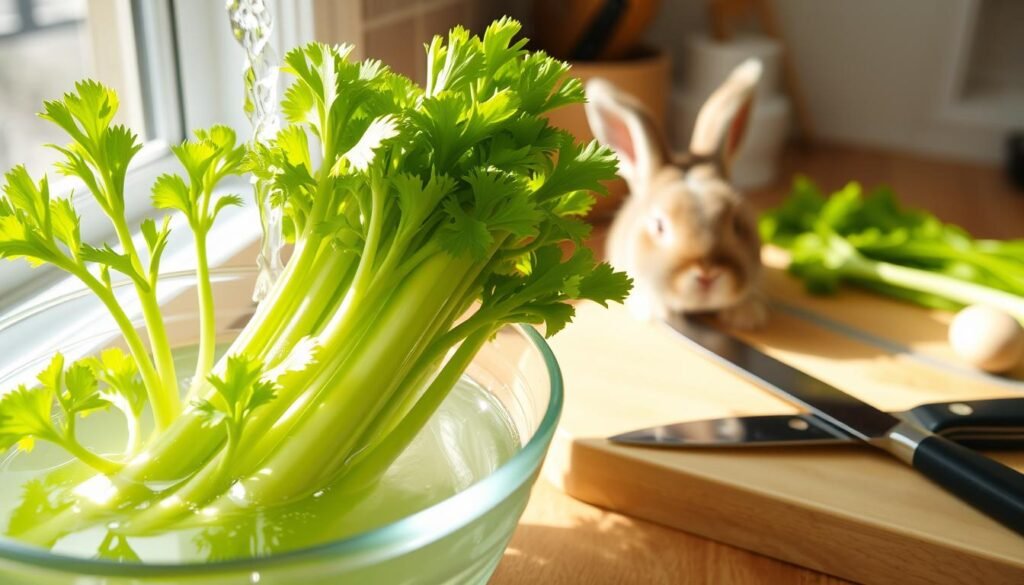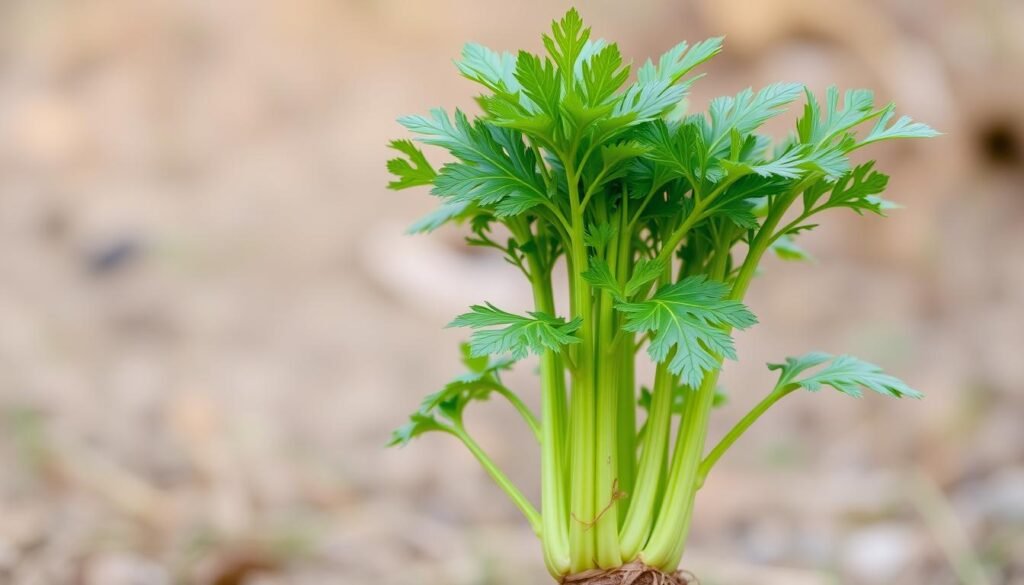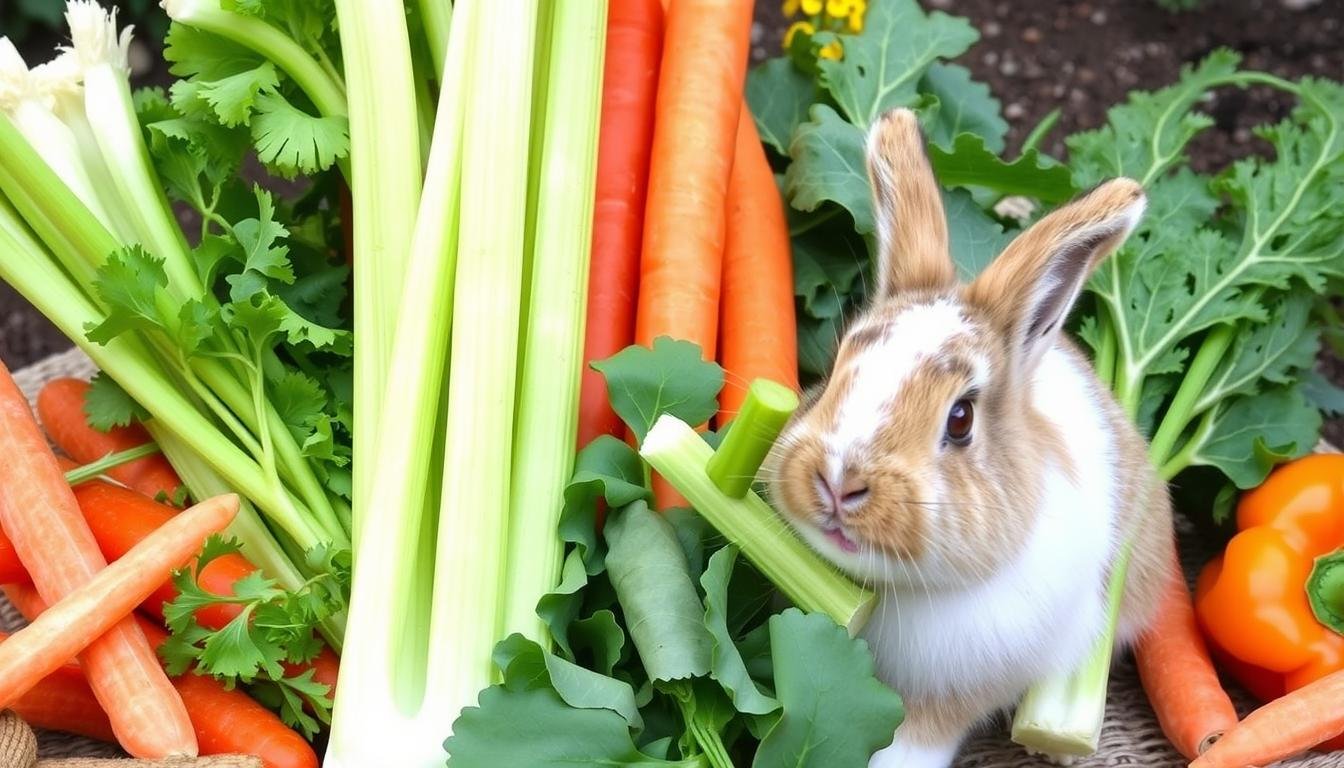As a rabbit owner, I’m always searching for healthy food options for my pet. Celery is a vegetable that catches my eye, wondering if it’s safe for rabbits. With millions of pets in the U.S., it’s key to feed them well.
Rabbits need a balanced diet, with lots of fiber and carbs. This is why I’m curious about celery’s role in their diet.
Key Takeaways
- Rabbits can eat celery, but it’s essential to introduce it gradually and in moderation as part of a rabbit diet.
- Celery can be a healthy addition to a rabbit’s diet, providing essential vitamins and minerals, and is considered one of the safe vegetables for rabbits.
- Rabbits require a balanced diet that includes a variety of vegetables, including leafy greens, to stay healthy, and celery can be part of that diet.
- It’s crucial to limit commercial rabbit food to no more than 10% of a rabbit’s total daily caloric intake1, and focus on providing a balanced rabbit diet that includes safe vegetables for rabbits.
- Food expenses can account for up to one-third of the annual costs associated with owning a rabbit1, which is why it’s essential to make informed decisions about a rabbit diet and safe vegetables for rabbits.
- A well-balanced diet is vital for maintaining a rabbit’s overall health and preventing conditions like GI stasis1, and providing a rabbit diet that includes safe vegetables for rabbits is crucial.
The Truth About Rabbits and Celery
Celery is a nutritious vegetable that offers many health benefits for rabbits. It’s packed with vitamins A, C, and K, as well as fiber and antioxidants2. This makes celery a great choice for a rabbit’s diet, supporting their health.
Rabbits enjoy celery because of its crunchy texture and sweet taste. It’s a wonderful snack that keeps them happy and healthy.
When feeding celery to rabbits, it’s important to follow some guidelines. Experts say adult rabbits should eat one cup of packed greens for every two pounds of their weight. No more than 30% of their diet should be celery-based2.
It’s also advised to limit the amount of celery given to a rabbit each day. Cut celery into short pieces, no longer than 1 inch, to avoid choking hazards2.
Here are some key points to consider when feeding celery to rabbits:
- Celery contains just under 2% sugar2
- Celery is high in water content, and overconsumption can lead to diarrhea2
- For baby rabbits, no vegetables, including celery, should be consumed until they are 12 weeks old2
By following these guidelines and considering the nutritional benefits of celery, you can help support your rabbit’s overall health and well-being. This makes celery a great addition to their diet2.
Can Rabbits Eat Celery Safely?
As a rabbit owner, it’s key to make sure your pet eats safe vegetables for rabbits. Celery is one of them. It’s safe for rabbits, but introduce it slowly and in small amounts3. Celery’s high water content, about 95%3, helps keep rabbits hydrated. But eating too much can upset their stomachs.
A good rabbit diet has many vegetables, and celery is okay. Feed rabbits 1-2 small pieces (1-inch chunks) of celery each day4. Remember, veggies like celery should make up only 10-15% of their daily food4. Here’s a table showing how much celery rabbits should eat:
| Rabbit Weight | Recommended Daily Intake of Celery |
|---|---|
| 6-8 pounds | 2 cups of leafy greens or vegetables (like celery)3 |
| Adult rabbits | 1 cup of packed greens for every 2 pounds of their weight2 |
Start with small amounts of celery to avoid stomach problems. Make sure it’s fresh and free of harmful chemicals3. This way, you can give your rabbit a healthy diet with safe vegetables for rabbits like celery.
How Much Celery Should Rabbits Eat
Feeding rabbits celery needs careful attention to keep them healthy. The right amount is about 1-2 cups of celery for every 4 pounds of body weight4. It’s best to give them 1-2 small pieces (1-inch chunks) daily as part of a balanced diet4.
Knowing the right portion sizes is key. New foods should be introduced slowly. Vegetables should make up 10-15% of their diet, with hay being the main food4. Too much celery can cause stomach problems like diarrhea, so it’s important to limit it4.
Here are some guidelines for feeding rabbits celery:
- Start with small amounts (1-2 small pieces) and gradually increase the portion size
- Feed celery 2-3 times a week, not as a daily staple4
- Monitor your rabbit’s response and adjust the portion size as needed
Remember, the right portion sizes and introducing new foods slowly are crucial for rabbits’ health. By following these tips, you can keep your rabbit happy and healthy4.

| Rabbit Weight | Recommended Daily Portion Size |
|---|---|
| 2 lbs | 1 cup of leafy greens daily and 2 tablespoons of pellets1 |
| 10 lbs | 5 cups of leafy greens daily and 2 tablespoons plus ½ cup of pellets1 |
Preparing Celery for Your Rabbit
Preparing celery for your rabbit is key to their health and happiness. It’s important to wash and chop the celery into small pieces to avoid choking hazards4. This step is vital to prevent digestive problems.
First, wash the celery stalks well under running water to get rid of dirt. Then, cut the celery into small pieces, about 1-2 inches long, to avoid choking hazards4. You can also use the leaves in your rabbit’s salad. Just remember, celery should be given in small amounts as part of a varied diet to avoid digestive issues4.
Here are some tips for preparing celery for your rabbit:
- Wash the celery stalks thoroughly under running water
- Chop the celery into small pieces to prevent choking hazards
- Remove the leaves and use them as a nutritious addition to your rabbit’s salad
- Offer a limited amount of celery as part of a varied diet
By following these simple steps, you can ensure your rabbit enjoys celery safely and healthily. Preparing celery for rabbits is a crucial part of their diet, and with these tips, you can give them a tasty and nutritious treat4.

Always put your rabbit’s health and safety first when introducing new foods, like celery. With the right preparation and moderation, celery can be a wonderful addition to their diet4.
Different Parts of the Celery Plant
As a rabbit owner, knowing what parts of the celery plant are safe is key. The stalks, leaves, and base of the celery plant are all safe for rabbits5. Start by giving your rabbit the stalks as a tasty snack6.
The leaves of the celery plant are also good for rabbits. They are full of fiber and nutrients, making them a healthy choice6. Make sure to remove any tough parts from the base so your rabbit can digest it well.
Here are some key points to consider when feeding your rabbit different parts of the celery plant:
- Celery stalks are a great snack for rabbits and can be fed in moderation5.
- Celery leaves are edible and can be used as a nutritious addition to your rabbit’s salad6.
- The base of the celery plant is safe for rabbits to eat, but remove any tough or fibrous parts5.

Always introduce new foods, like different parts of the celery plant, slowly and in small amounts. This helps prevent upset stomachs in your rabbit6. By following these guidelines, you can give your rabbit a balanced diet that includes safe plants like celery5.
Potential Risks and Concerns
Feeding rabbits celery can pose some risks. Rabbit health risks include stomach upset and other health issues if the celery is not fresh or eaten too much7. It’s vital to make sure the celery is free of pesticides and contaminants for celery safety.
A balanced diet is key for rabbits’ health. Eating too much can upset their sensitive stomachs7. Their diet should include hay, leafy greens, and veggies, with pellets being a small part of their daily food.
Some risks of feeding rabbits celery include:
- Stomach upset and diarrhea
- Other health problems if the celery is not fresh or if it is fed in excess
- Gastrointestinal (GI) stasis, a life-threatening condition that can result from an imbalance in the digestive tract7
To avoid these risks, introduce celery slowly and in small amounts. Make sure it’s fresh and free of contaminants. By knowing these risks and taking steps to prevent them, rabbit owners can keep their pets safe and healthy.
| Potential Risk | Description |
|---|---|
| Stomach Upset | Can occur if the celery is not fresh or if it is fed in excess |
| GI Stasis | A life-threatening condition that can result from an imbalance in the digestive tract7 |
Introducing Celery to Your Rabbit’s Diet
When adding new foods to a rabbit’s diet, start small to avoid upset stomachs4. Celery should be given in moderation, about 1-2 small pieces daily4. It’s important to remember that veggies, like celery, should be 10-15% of their daily food4.
To add celery to your rabbit’s diet, start with 1-2 tablespoons for every 2 pounds of body weight8. Increase the amount slowly as needed. Celery is mostly water, making it a great hydrating snack8. It also has about 1.6 grams of fiber per 100 grams, helping with digestion8.
Here are some tips for introducing celery to your rabbit’s diet:
- Start with small amounts and gradually increase the portion size
- Monitor your rabbit’s response to the new food and adjust the portion size as needed
- Introduce celery alongside hay and pellets for a balanced diet
By following these tips and introducing celery slowly, you can ensure a healthy diet for your rabbit48.
| Food | Recommended Daily Intake |
|---|---|
| Celery | 1-2 small pieces (1-inch chunks) |
| Vegetables | 10-15% of daily food intake |
Alternative Vegetables for Rabbits
As a rabbit owner, it’s key to give them a variety of veggies. Celery is great, but it’s good to try other safe options too. Leafy greens, carrots, bell peppers, and cucumbers are all good choices9. Make sure to give them in small amounts and slowly introduce new foods to avoid stomach problems.
A good diet for rabbits includes hay, pellets, and fresh veggies. They also need plenty of water9. Rabbits should eat mostly hay, about 80%, to keep their digestive system healthy9. Some safe foods for them are:
- Vegetables like carrots, kale, and spinach
- Fruits like apples and bananas, but only a little
- Herbs like basil and parsley
Creating a balanced diet means giving them different foods but not too much. This helps prevent health issues9. By offering a variety of safe veggies and following dietary guidelines, you can keep your rabbit happy and healthy.
Remember, a balanced diet is crucial for your rabbit’s health9. A mix of hay, pellets, and fresh veggies helps prevent digestive problems. This way, your rabbit can live a long and joyful life.
Conclusion: Making Celery Part of Your Rabbit’s Healthy Diet
Celery is a great choice for your rabbit’s diet. It’s nutritious and tasty. To add it safely, follow the tips in this article. Start slow, offer different veggies, and always have fresh water available10.
With the right steps, you can give your rabbit a diet full of celery and other healthy veggies. This will keep them happy and healthy.
Celery is packed with vitamins and minerals that are good for your rabbit10. It also has fiber for digestion and is low in calories. This makes it perfect for keeping your rabbit at a healthy weight10.
Adding celery to your rabbit’s diet can boost their immune system. It also helps keep their skin and coat healthy. Plus, it’s a tasty treat they’ll love.
Always introduce new foods like celery slowly. Watch how your rabbit reacts. If they have any digestive issues, stop feeding it and talk to your vet10. Following these steps will help make celery a safe and healthy part of their diet.

